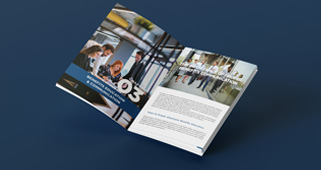The onboarding process is a critical component of any organization’s success. It sets the tone for new hires, influences their productivity, and impacts overall company culture. A streamlined onboarding process, where steps are clear, efficient, and supportive, can provide numerous benefits. Here are five compelling reasons to have a streamlined onboarding process:
1. Enhances Employee Engagement and Retention
One of the primary benefits of a streamlined onboarding process is its positive impact on employee engagement and retention. When new employees feel welcomed, valued, and supported from the start, they are more likely to develop a strong connection with the company. This sense of belonging and commitment reduces turnover rates and fosters loyalty. Here’s how:
- Clear Expectations: A streamlined process ensures that new hires understand their roles, responsibilities, and goals from day one. This clarity reduces anxiety and confusion, allowing employees to focus on their tasks with confidence.
- Structured Introductions: Efficient onboarding includes well-organized introductions to team members and key stakeholders. This helps new hires quickly build relationships and feel part of the team.
- Ongoing Support: A continuous and structured onboarding process includes regular check-ins and feedback sessions. This ongoing support helps address any issues early on and keeps employees engaged.
2. Increases Productivity
A streamlined onboarding process significantly boosts productivity. When new employees receive the right tools, information, and training promptly, they can start contributing to the organization faster. Key aspects include:
- Effective Training Programs: Well-designed training programs tailored to different roles ensure that new hires acquire the necessary skills and knowledge efficiently. This minimizes the learning curve and accelerates their ability to perform tasks.
- Access to Resources: Ensuring that new hires have access to all required resources, such as software, hardware, and documentation, right from the start eliminates downtime and enables them to hit the ground running.
- Structured Learning Paths: Providing a clear learning path with milestones and objectives helps new employees stay on track and measure their progress, further enhancing productivity.
3. Improves Company Culture and Cohesion
A streamlined onboarding process plays a crucial role in shaping and maintaining a positive company culture. It ensures that new hires align with the company’s values, mission, and vision, fostering a cohesive and harmonious work environment. Key points include:
- Consistent Messaging: A standardized onboarding process ensures that all new employees receive the same information about the company’s culture, values, and expectations. This consistency helps create a unified workforce.
- Cultural Integration: Activities and sessions designed to introduce new hires to the company culture, such as team-building exercises, mentorship programs, and cultural immersion activities, promote a sense of belonging and unity.
- Role Models and Mentorship: Pairing new hires with mentors or role models who embody the company culture helps them assimilate more quickly and understand the unwritten norms and behaviors expected within the organization.
4. Reduces Costs and Administrative Burden
A streamlined onboarding process can lead to significant cost savings and reduce the administrative burden on HR and management teams. Efficient processes minimize the time and resources required to bring new employees up to speed. Consider the following:
- Automation and Technology: Leveraging onboarding software and tools can automate repetitive tasks such as document signing, information dissemination, and training scheduling. This reduces manual effort and errors.
- Standardized Procedures: Having a standardized onboarding checklist and procedures ensures that all necessary steps are followed consistently, reducing the risk of overlooking important details and minimizing rework.
- Time Efficiency: A well-organized onboarding process reduces the time HR and managers spend on administrative tasks, allowing them to focus on more strategic activities that contribute to the company’s growth.
5. Enhances Compliance and Reduces Risk
Compliance with legal and regulatory requirements is a critical aspect of the onboarding process. A streamlined process ensures that all necessary legal documents and training are completed accurately and on time, reducing the risk of non-compliance and potential legal issues. Key considerations include:
- Accurate Documentation: Ensuring that all employee documentation, such as contracts, tax forms, and non-disclosure agreements, is completed accurately and stored securely.
- Mandatory Training: Including mandatory training sessions on topics such as workplace safety, anti-discrimination policies, and data protection within the onboarding process ensures that new hires are aware of their legal responsibilities and company policies.
- Audit Trails: Maintaining a clear and comprehensive record of the onboarding process, including completed forms, training sessions, and acknowledgments, provides an audit trail that can be crucial in case of legal disputes or audits.
A streamlined onboarding process is essential for fostering a productive, engaged, and compliant workforce. By enhancing employee engagement and retention, increasing productivity, improving company culture, reducing costs and administrative burdens, and ensuring compliance, organizations can create a strong foundation for long-term success. Investing in a well-structured onboarding process is not just about welcoming new employees; it’s about setting them up for success and, in turn, driving the overall growth and prosperity of the organization.






